| Time | Friday, December 24 at 10:00pm – December 25 at 3:00am |
|---|---|
|
|
|
| Location | Drom Bar & Restaurant85 Ave A (betw. 5th and 6th)New York, NY |
|
|
|
| Created By | Drom |
|
|
|
| More Info | 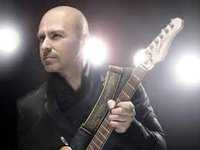 Demir joined Istanbul heavy rock band Pentagram as songwriter and guitarist. In 1992, he studied at Musician’s Institute in Los Angeles with Scott Henderson, Frank Gambale, and MI founder Paul Hanson. In 2000, Demir released his eponymous initial solo album with Sony Music. His albums “Dunya Benim” (The World is Mine) and “Istanbul2004”. The latter was sold in 11 European countries after his successful tour with Mike Tramp (Whitelion). The songs Demir wrote for Sertab Erener were widely accepted in Europe and Turkey. One of these songs, “Every Way That I Can,” won the first prize in the 2003 Eurovision Song Competition and sold 400,000 units worldwide. Demir Demirkan also wrote television jingles and composed soundtracks for television and films. One of the more remarkable works of Demir Demirkan was the music he composed for the documentary about Gallipoli/Gelibolu in 2005. That soundtrack involved ethnical strings recorded in Turkey and classical melodies recorded by a symphonic orchestra and choir in the Czech Republic. It was released in Turkey and Australia. Demir joined Istanbul heavy rock band Pentagram as songwriter and guitarist. In 1992, he studied at Musician’s Institute in Los Angeles with Scott Henderson, Frank Gambale, and MI founder Paul Hanson. In 2000, Demir released his eponymous initial solo album with Sony Music. His albums “Dunya Benim” (The World is Mine) and “Istanbul2004”. The latter was sold in 11 European countries after his successful tour with Mike Tramp (Whitelion). The songs Demir wrote for Sertab Erener were widely accepted in Europe and Turkey. One of these songs, “Every Way That I Can,” won the first prize in the 2003 Eurovision Song Competition and sold 400,000 units worldwide. Demir Demirkan also wrote television jingles and composed soundtracks for television and films. One of the more remarkable works of Demir Demirkan was the music he composed for the documentary about Gallipoli/Gelibolu in 2005. That soundtrack involved ethnical strings recorded in Turkey and classical melodies recorded by a symphonic orchestra and choir in the Czech Republic. It was released in Turkey and Australia.Demir Demirkan and Sertab Erener embarked on the international project Painted on Water together. This innovative work entitled Ebru was co-produced by Demir and Jay Newland, a multi- Grammy-winning-producer (Norah Jones’ “Come Away with Me”). |
Category: Culture/Art
-

Demir Demirkan at Drom
-

Istanbul to host international documentary film festival
Istanbul is set to host an international documentary film festival, gathering directors from Turkey and the globe.
Tuesday, 19 October 2010 16:44
 Istanbul is set to host an international documentary film festival, gathering directors from Turkey and the globe.
Istanbul is set to host an international documentary film festival, gathering directors from Turkey and the globe.The 13th Istanbul International 1001 Documentary Film Festival will be last through October 29 to November 4 with the participation of 68 films by directors from 24 countries including Turkey, the United States, Germany, Iran, Argentina, India, China, Ireland and France.
This year’s event will also present a “Cinema Laboratory” which will feature seminars to discuss new approaches in documentary filming.
The festival will screen documentaries in the categories of “Work and Labor”, “Of Hard Times”, “Modern Times”, “Of Men and Women”, “Away from Home”, “Art and Passion”, and
AA
-

Rescue Effort Reaches Miners
By MATT MOFFETT, CAROLINA PICA and ANTHONY ESPOSITO
SAN JOSÉ MINE, Chile—Miners that had been trapped deep underground for 69 days were pulled to the rescue one by one Wednesday in a process that went faster than expected and kept people around the world transfixed.
The miners rose to the surface in a red, white and blue rescue capsule dubbed “the Phoenix.” By Wednesday afternoon, 24 of the 33 miners were above ground.
Latest Updates
![Rescue Effort Reaches Miners 6 [1013chile03]](http://si.wsj.net/public/resources/images/OB-KK880_1013ch_A_20101012215627.jpg)
Reporters Carolina Pica, Anthony Esposito and Matt Moffett are providing updates in real time of the rescue of the 33 trapped miners. Go to the live blog.
Plus:
- Live Video: Watch the Miners’ Rescue
- Video: Chilean Miner Rescue Continues
- Who Are the Miners? | Latest Photos
- Once Out, Miners Face Hospital Stay
Chile Mine Rescue in the News
View Slideshow
![Rescue Effort Reaches Miners 7 [SB10001424052748703673604575549940242265812]](http://s.wsj.net/public/resources/images/OB-KL030_1013ne_D_20101013095543.jpg)
As they emerged, websites of Chilean newspapers were keeping a running score, almost like of a sporting event. “Things have gone extraordinarily well up to now,” said Health Minister Jaime Mañalich.
President Sebastián Piñera said the rescue could wrap up faster than anticipated. At the current pace of a miner surfacing every 40 minutes, the operation could end Wednesday evening, he said in a news conference, rather than on Thursday as originally expected.
Florencio Ávalos, a 31-year-old father of two, was the first to be rescued after having endured longer underground than any mine accident survivors to date.
Mr. Ávalos emerged above ground just after midnight on Wednesday Chile time as rescuers cheered. He was greeted by family members and government officials as he made his way into a triage area where he would undergo an initial checkup.

With a majority of the Chile miners now pulled safely out of the ground, the rescue effort is expected to conclude tonight ahead of schedule according to Carolina Pica, who has the latest from Chile. Plus, the U.S. brokers Afghan-Taliban contact.
Mario Sepúlveda, the chatty “presenter” who acted as host for video recordings the miners had made underground, was the second miner brought to the surface.
After emerging from the capsule, Mr. Sepúlveda, gave a bear hug to all of the dignitaries present, including Mr. Piñera and the first lady. Mr. Sepúlveda grabbed stones collected from the mine’s belly and handed them out with a big smile to a laughing Mr. Piñera and Mining Minister Laurence Golborne.
The oldest trapped miner was brought out early Wednesday. Mario Gómez, 63, who suffers from the lung disease silicosis, dropped to his knees in gratitude after surfacing.
Mr. Mañalich, the health minister, told reporters that bringing Mr. Gómez back to the surface had posed challenges. He was outfitted with a special face mask to ensure that he received enough oxygen.
Bolivian President Evo Morales arrived at the Copiapó airport in northern Chile early Wednesday morning to meet with his countryman, Carlos Mamani. Mr. Mamani, the only non-Chilean among the trapped miners, was the fourth miner rescued.
U.S. President Barack Obama said the resolve of Chilean people has inspired the world, the Associated Press reported. Mr. Obama, who watched some of the rescue operations on television, said the rescue is a tribute to their determination, and that of the Chilean government and its people. He also praised American companies that played a role in the rescue.
Miners Make Their Way Out
View Slideshow
![Rescue Effort Reaches Miners 9 [SB10001424052748703440004575548931107918958]](http://s.wsj.net/public/resources/images/OB-KK938_1013ch_D_20101013043038.jpg)
Hugo Infante/AFP/Getty ImagesChilean miner Mario Sepulveda celebrated after been brought to the surface Wednesday.
Before the emergence of Mr. Ávalos, a rescuer worker, Manuel González, had ridden down into the bottom of the mine. Spectral images from a camera showed him embracing the miners. It was the first direct contact they had had with another person since the Aug. 5 cave-in. Mr. Piñera told Mr. Gonzalez before his departure, “may God be with you, the Chilean people are with you. Bring back the miners with you.”
And so he brought back Mr. Avalos. Earlier, rescuers lowered the unmanned 14-foot capsule some 200 feet, while engineers made last-minute adjustments to systems to enable communication between the miners and the surface during their trips. On a second unmanned test run, rescuers descended the capsule the full length of the shaft.
The government had previously revealed the order in which the men will be extracted from the mine, where they have already endured longer than any previous mine accident survivors. The first men were chosen because they were thought to have the physical and mental attributes to work out any bugs that might emerge in the capsule.
At Camp Hope, the sprawling tent city the miners’ relatives established after the Aug. 5 cave-in, family members anxiously counted the minutes for the rescue to begin its final phase.
Chile’s Efforts to Rescue Miners
See key dates
View Interactive

The Miners
See the 33 men trapped underground.
View Interactive

“My heart is beating fast and it feels like it’s about to explode,” said Priscilla Ávalos, who has been traveling to the mine every weekend to be closer to her brothers Renan and Florencio Ávalos.
Fabiola Acuña, wife of miner Claudio Acuña, was digesting the news that her husband had drawn No. 26 in the miner extraction lottery. “The wait will even be longer,” she sighed. Health Minister Jaime Mañalich said that several miners had offered to be the last man out of the mine, but that distinction would fall to the shift foreman, Luis Urzúa, whose leadership skills have been widely praised.
Down below, the miners made final preparations of their own.
“The mountain began to creak in the morning, but in the afternoon it stopped creaking,” miner Dario Segovia wrote in a letter his brother provided to the Santiago newspaper La Tercera Tuesday. “We prayed. All of us are uneasy about the size of the rocks.”
The operation bears risks. After a drill finished boring a 28-inch-wide hole into the chamber where the miners are located early Saturday, engineers decided to install steel casing in only the top 315 feet of the 2,050-foot shaft. They are counting on the rest of the hole being smooth and sound enough to serve as a safe conduit for escape.
Journal Community
- discuss
“ I’d say ‘God bless the miners.’ But I think he already did. ”
—Travis Gorlieski
“If a fragment of rock was to wedge the capsule to the wall of the hole, the [miners] would have their work ahead of them to free the capsule,” said Louis King, managing director of Australian Mine Rescue Consultants, which isn’t involved in the rescue effort. “I don’t think it is time to celebrate just yet.”
A spirit of solidarity has bloomed in the Atacama Desert, the barren wasteland where the mine is located, since the cave-in. Volunteers from nearby towns came to cook and baby-sit for the families of miners who were camping above the mine. Local mining companies brought drills to San Jose and began sending probes deep into the earth to look for the chamber where the men were holed up—or find their corpses.
A probe made contact with the miners 17 days after the cave-in, when the miners were down to the last two cans of the tuna that had sustained them through the ordeal.
“Life is hard here, there are earthquakes and accidents,” said Macarena Valdes, a 30-year-old topographer who helped direct the positioning of the drills in the rescue effort “People have to work together.”
After the miners were found, their cause ceased to be simply Chilean as the drama was followed around the world.
Schoolchildren in St. Paul, Minn., and Fredricktown, Pa., sent letters of support to the miners’ families. Pearl Jam front man Eddie Vedder celebrated them on his Twitter account: “Viva chile! 33 miners are alive!”
Town leaders and industrialists from Nice, France, shipped half a ton of protein bars to the mine, thinking the men might need nourishment.
English soccer legend Bobby Charlton, himself the son of a miner, invited the miners on an all-expenses paid trip to see the Manchester United Football Club play. A website collected thousands of messages of support from throughout the Spanish-speaking world.
“Miners are working-class heroes in the best of times, but in the worst of times everyone can relate to taking a job where there are high risks but really no choice,” said Harley Shaiken, a specialist on Latin America and labor at the University of California, Berkeley.
The miners were emerging looking healthier than many had expected and even clean-shaven, and at least one, Mr. Sepúlveda, the second to taste freedom, bounded out and thrust a fist in the air in the style of a prizefighter.
Mr. Sepúlveda’s performance exiting from the shaft appeared to confirm what many Chileans thought when they saw his engaging performances in videos sent up from below— that he could have a future as a TV personality.
But he tried to quash the idea as he spoke to viewers of Chile’s state television channel while sitting with his wife and children shortly after his rescue.
“The only thing I’ll ask of you is that you don’t treat me as an artist or a journalist, but as a miner,” he said. “I was born a miner and I’ll die a miner.”
Write to Matt Moffett at matthew.moffett@wsj.com
Write to Matt Moffett at matthew.moffett@wsj.com
More on the Chilean Miner Rescue
- Live Video of the Miners’ Rescue
- Live Blog: Rescue of the Miners
- Once Out, Miners Face Hospital Stay
- PM Report: Mine Rescue to Wrap Up Tonight
- PM Report: Mine Rescue to Wrap Up Tonight
- Video: Chilean Miner Rescue Continues
- Topics: San Jose Mine
- Writing Home, ‘New’ Miners Emerge (10/9/2010)
- Chile Miners Work Out Before Rescue (10/7/2010)
- Inventions Ease the Plight of Trapped Miners (9/30/2010)
-
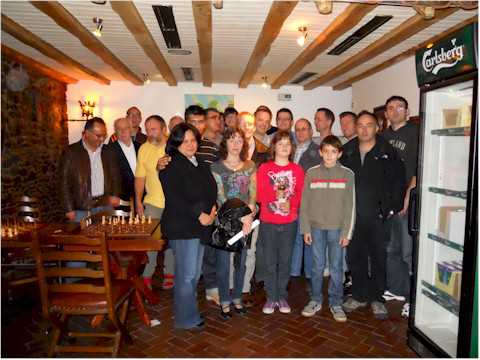
We play all in one language
INTERCULTURAL CHESS TOURNAMENT

We are now in the era of global convergence. The world is getting smaller, the challenge of coexistence between people from different cultures is more exciting than ever.
For example, there is the chess club Satranç Club 2000 (Satranç is the turkish translation for chess), which has been founded ten years ago by turkish-originated chess friends and chess enthusiasts. Right from the start, the club invited players from all nations. Now Germans and Turks, Serbs and Kosovars etc. are playing shoulder to shoulder for their Satranç Club. It is one the few chess clubs in the world, which contains the intercultural fraternisation in its articles of association. Other chess clubs, especially in North Rhine-Westphalia, are intending to follow this archetype. Migrants are calling everyone up for integration.
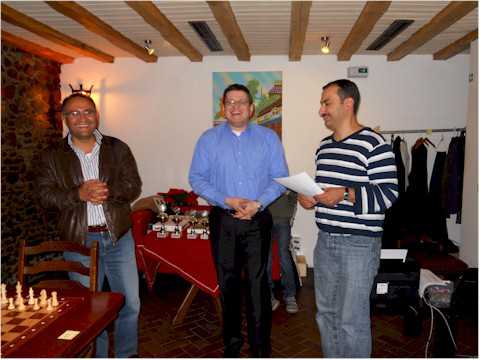
Familiar atmosphere of the Satranc Club Chairmen, before award ceremony (from left to right Abuzer Akpinar, Güven Manay, Izzet Yilmaz) The Satranç Club organized their fourth Intercultural Rapid Chess tournament on 26th of September 2010. The tournament was held this time for the tenth anniversary of association and it was also an official European Union event on the “European Day of Languages”. The slogan was “We play all in one language / Biz ayni dilden oynuyoruz”.
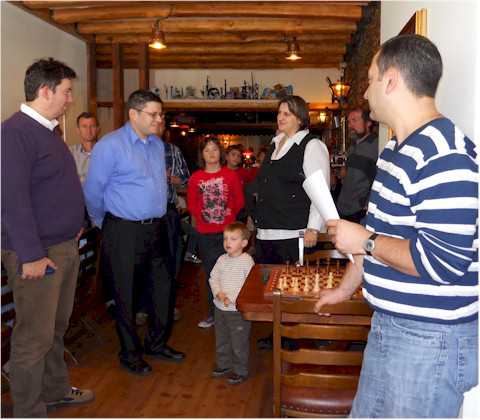
Inaugural address with Güven Manay, Heike Vogel and Izzet Yilmaz The unbeaten winner was the talented player Carlo Pauly. Runner-up was Markus Ecker and the top player of the Satranç Club, Alexander Johannes, was third. The senior prize was awarded to Peter Faethe and the junior prize to Sophie Schröter. The 1st Satranç Chairman Güven Manay congratulates everyone for his hard work in organizing and preparing the tournament, but last not least to the arbiter Izzet Yilmaz.
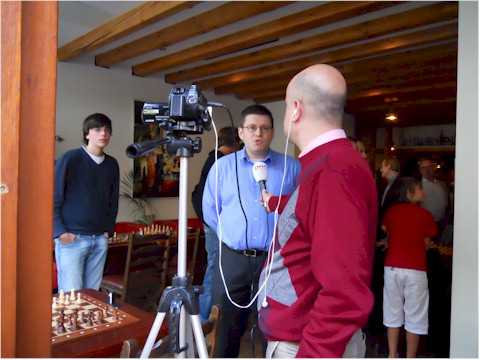
Interview of the press agency DHA with Güven Manay Tournament table and results at:
2010 Website / IKW 2010 website.html
The Satranç Club is looking for your visit and inviting everyboday to the centrally located City Hotel Köln am Neumarkt, Clemensstr. 8, 50676 Cologne, especially on Saturdays starting at 16 clock.
Title winners of the Intercultural Tournament 2010, beginning from the left Peter Faethe, Carlo Pauly, Sophie Schröter, Markus Ecker, Alexander Johannes Report: Manay Güven, First Chairman of the Satranç Club 2000 (www.satranc.de.vu)
Photos: Christine Westphal
-
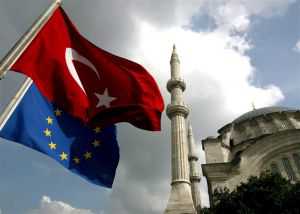
Maybe EU Can Be a Member to Turkey, One Day
 By The Istanbulian — Global BloggerThe heading is about a possibility. Just a possibility. The EU must work hard to realize it.What do I mean?Let’s remember:In France, the right-wing Sarkozy government can comfortably start a xenophobic debate on national identity, then deport the Roma community by violating the EU acquis communitaire. In the end, the European Commission steps back after initially daring to criticize Sarkozy.In Germany, even a Social Democrat former minister can voice racist views, stating that the Turkish-Muslim community is lowering the average IQ of the country. And polls reveal that most Germans support these racist views… When the President opposes these views and states that Islam is also a part of Germany now, a right-wing politician, Norbert Geis, can snugly suggest that freedom of religion doesn’t mean the equality of all religions.Likewise, in the Netherlands, racism in disguise of free speech is now completely tolerated as long as it is anti-Muslim, not anti-Semitic, as can be seen from the ongoing farce to form a coalition government with the help of Islamophobic far-rightists. All these countries with some other ones are about to ban burqa as a stupid, populist action against Islamist extremism.A similar trend can be observed in several other EU countries, including Italy where the Northern League is a legitimate entity with an openly racist discourse that is adopted by the Berlusconi government and reflected in its asylum/deportation policies.On the other hand, in Spain, the courts can ban several political parties of an ethnic minority, the Basques, by simply stating that they just don’t condemn separatism. Political demonstrations to protest a court decision can also be banned easily.In Greece, the government can destroy all of its Islamic heritage dating back to 450-years-long Ottoman rule, making Athens the only European capital without a mosque. It can force its thousands of Muslim citizens and immigrants to pray in a city square on Fridays and in religious holidays.In Bulgaria and Romania, the government can keep ignoring EU’s economic criteria and take no notice of rampant corruption. Not only they have been accepted as full members of the EU in spite of these violations, but also the EU doesn’t do anything about them even now, although an accession monitoring system is still on as ridiculous first for the Union. “Still failing to meet EU standards” even after accession!I’m not going list all other EU members that systematically violate different EU rules, like it is with Britain and the rules to protect privacy or Poland and the rules on internal gas market or Hungary and the rules on state aid…Or almost all member states which don’t apply the decisions of the European Court of Justice that upheld the right of free movement of qualified Turkish citizens in the EU, calling for all EU states to comply with this decision, helplessly.* * *Imagine what would happen with the already-stagnated accession process, if Turkey violates one of these EU rules even slightly.With the French style anti-Roma deportation or the German-Italian-Dutch style normalization of racism, the anti-Turkish front in the EU could immediately stop the accession by naming Turkey as a fascist state… Remember how the EU officials were criticizing the Turkish ban on head scarves in university campuses and how they are silent now for a burqa ban in member states.The link between PKK, a terrorist organization according to the EU, and its political extensions have been documented clearly in the past (in a more clear way than the Spanish courts did with the links of ETA to Basque parties) and they have been banned in Turkey as such; but the EU had harshly criticized Ankara, while cooperating with Spain.While Greece was silently destroying almost everything from its Islamic past in spite of the religious needs of its Muslim population, Turkey was protecting most of its Christian and Jewish heritage even though most of the local congregations were too small to keep up these buildings. Then what happened? Turkey is now being criticized for not immediately installing a giant cross on the dome of a renovated Armenian church in a remote island in far east!And Turkey is still being scolded in EU’s Progress Reports for not fully adopting the economic standards of the Union, even though its economy is much healthier than -not only Bulgaria and Romania, but also- most of the member states now.* * *Such double-standards by the EU are not news anymore. However, for the times they are a-changin’, these double-standards are more dangerous now.The EU, with its right-wing old guard in charge, can still not see that it desperately needs Turkey, much more than Turkey needs it.If Turkey is alienated by the EU for some more time, the EU will miss the last train of membership, not Turkey.The rise of Turkey is not the product of the AKP government by the way (AKP still practices the economic strategy which was drawn by Kemal Dervis, a Social Democrat politician, in 2001). By reviewing Turkey’s demographic and economic trends, its prospective rise has been foreseen in early 1980s. In near future, if Turkey adopts a more import-oriented economic strategy, it will be able to support even a more aggressive foreign policy.By then, the EU may even collapse alongside Euro, while Turkey keeps flourishing by remaining outside the Union. So as I’ve said before, Brussels and the peoples of the EU have only one option as a stimulus now:Get rid of these racists and enlarge your EU with Turkey, before its too late!, October 7, 2010
By The Istanbulian — Global BloggerThe heading is about a possibility. Just a possibility. The EU must work hard to realize it.What do I mean?Let’s remember:In France, the right-wing Sarkozy government can comfortably start a xenophobic debate on national identity, then deport the Roma community by violating the EU acquis communitaire. In the end, the European Commission steps back after initially daring to criticize Sarkozy.In Germany, even a Social Democrat former minister can voice racist views, stating that the Turkish-Muslim community is lowering the average IQ of the country. And polls reveal that most Germans support these racist views… When the President opposes these views and states that Islam is also a part of Germany now, a right-wing politician, Norbert Geis, can snugly suggest that freedom of religion doesn’t mean the equality of all religions.Likewise, in the Netherlands, racism in disguise of free speech is now completely tolerated as long as it is anti-Muslim, not anti-Semitic, as can be seen from the ongoing farce to form a coalition government with the help of Islamophobic far-rightists. All these countries with some other ones are about to ban burqa as a stupid, populist action against Islamist extremism.A similar trend can be observed in several other EU countries, including Italy where the Northern League is a legitimate entity with an openly racist discourse that is adopted by the Berlusconi government and reflected in its asylum/deportation policies.On the other hand, in Spain, the courts can ban several political parties of an ethnic minority, the Basques, by simply stating that they just don’t condemn separatism. Political demonstrations to protest a court decision can also be banned easily.In Greece, the government can destroy all of its Islamic heritage dating back to 450-years-long Ottoman rule, making Athens the only European capital without a mosque. It can force its thousands of Muslim citizens and immigrants to pray in a city square on Fridays and in religious holidays.In Bulgaria and Romania, the government can keep ignoring EU’s economic criteria and take no notice of rampant corruption. Not only they have been accepted as full members of the EU in spite of these violations, but also the EU doesn’t do anything about them even now, although an accession monitoring system is still on as ridiculous first for the Union. “Still failing to meet EU standards” even after accession!I’m not going list all other EU members that systematically violate different EU rules, like it is with Britain and the rules to protect privacy or Poland and the rules on internal gas market or Hungary and the rules on state aid…Or almost all member states which don’t apply the decisions of the European Court of Justice that upheld the right of free movement of qualified Turkish citizens in the EU, calling for all EU states to comply with this decision, helplessly.* * *Imagine what would happen with the already-stagnated accession process, if Turkey violates one of these EU rules even slightly.With the French style anti-Roma deportation or the German-Italian-Dutch style normalization of racism, the anti-Turkish front in the EU could immediately stop the accession by naming Turkey as a fascist state… Remember how the EU officials were criticizing the Turkish ban on head scarves in university campuses and how they are silent now for a burqa ban in member states.The link between PKK, a terrorist organization according to the EU, and its political extensions have been documented clearly in the past (in a more clear way than the Spanish courts did with the links of ETA to Basque parties) and they have been banned in Turkey as such; but the EU had harshly criticized Ankara, while cooperating with Spain.While Greece was silently destroying almost everything from its Islamic past in spite of the religious needs of its Muslim population, Turkey was protecting most of its Christian and Jewish heritage even though most of the local congregations were too small to keep up these buildings. Then what happened? Turkey is now being criticized for not immediately installing a giant cross on the dome of a renovated Armenian church in a remote island in far east!And Turkey is still being scolded in EU’s Progress Reports for not fully adopting the economic standards of the Union, even though its economy is much healthier than -not only Bulgaria and Romania, but also- most of the member states now.* * *Such double-standards by the EU are not news anymore. However, for the times they are a-changin’, these double-standards are more dangerous now.The EU, with its right-wing old guard in charge, can still not see that it desperately needs Turkey, much more than Turkey needs it.If Turkey is alienated by the EU for some more time, the EU will miss the last train of membership, not Turkey.The rise of Turkey is not the product of the AKP government by the way (AKP still practices the economic strategy which was drawn by Kemal Dervis, a Social Democrat politician, in 2001). By reviewing Turkey’s demographic and economic trends, its prospective rise has been foreseen in early 1980s. In near future, if Turkey adopts a more import-oriented economic strategy, it will be able to support even a more aggressive foreign policy.By then, the EU may even collapse alongside Euro, while Turkey keeps flourishing by remaining outside the Union. So as I’ve said before, Brussels and the peoples of the EU have only one option as a stimulus now:Get rid of these racists and enlarge your EU with Turkey, before its too late!, October 7, 2010 -

Planète Galata – Planet Galata – Eine Brücke in Istanbul
A non-linear Korsakow documentary about Galata Bridge of Istanbul. In German and French language.
Planet Galata – Eine Brücke in Istanbul
Ab sofort ist der non-lineare Korsakow-Dokumentarfilm von Florian Thalhofer über den Mikrokosmos der Istanbuler Galata-Brücke im Netz zu sehen. Die Ausstrahlung des TV-Films folgt am 27. September 2010 um 23.30 Uhr auf ARTE. Die Galata-Brücke in Istanbul ist ein eigener Kosmos. Zwischen Shops, Restaurants und Touristenströmen erleben wir Menschen, für die die Brücke Heimat, Hoffnung oder Lebensinhalt ist…

What is life like on planet Galata? Planète Galata – Un pont à Istanbul Le documentaire non-linéaire Korsakow de Florian Thalhofer qui décrit le microcosme du pont Galata à Istanbul est désormais en ligne. La version télé sera diffusée le 27 septembre 2010 à 23h30 sur ARTE. Le pont Galata est un monde à part. Nous avons rencontré dans les boutiques, les restaurants et au milieu des nuées de touristes des habitués pour qui ce pont est une patrie, un symbole d’espoir, ou carrément toute leur vie… info (Deutsch) view the whole film


